
Do you have a question about the HP ML110 and is the answer not in the manual?
| Product Line | ProLiant |
|---|---|
| Processor | Intel Xeon E3-1200 series |
| Processor Cores | 4 |
| Memory | Up to 32GB DDR3 |
| Storage | Up to 4 LFF |
| Network | Embedded 1GbE |
| Form Factor | Tower |
| RAID Support | HP Smart Array B120i Controller |
| Operating System Support | VMware |
Identifies and labels the physical components on the server's front panel.
Details the status LEDs and control buttons located on the server's front panel.
Identifies and labels the physical components found on the rear panel of the server.
Describes the status LEDs and control buttons located on the server's rear panel.
Identifies and labels the various components mounted on the server's main system board.
Explains the function, default settings, and operation of the system maintenance switch.
Details the LEDs present on the system board and their respective status indications.
Explains the Non-Maskable Interrupt feature for generating crash dump files.
Shows the physical locations and numbering of the DIMM slots on the system board.
Illustrates the numbering scheme for SAS and SATA device bays (LFF and SFF).
Explains the status LEDs on SAS and SATA hard drives and their meanings.
Details the LEDs for the Battery-Backed Write Cache module and their operational meanings.
Describes the LEDs on the Flash-Backed Write Cache module and their interpretations.
Identifies the physical locations of the system fan, processor fan, and PCI fan.
Provides instructions on how to turn on the HP ProLiant ML110 G7 server.
Details the steps required to safely shut down and power off the server.
Step-by-step procedure for removing the front bezel from the server chassis.
Instructions for correctly reinstalling the front bezel onto the server.
Procedure for safely removing the server's internal access panel.
Steps for correctly reinstalling the server's internal access panel.
Procedure for removing the internal air baffle for component access.
Instructions for correctly reinstalling the internal air baffle.
Procedure for removing the retainer for full-length expansion boards.
Steps for correctly reinstalling the retainer for full-length expansion boards.
Details HP Care Pack services for server setup, installation, and support.
Guidelines for selecting an optimal physical environment for server installation.
Specifies clearance dimensions needed for proper server ventilation.
Details the recommended operating temperature and humidity ranges for the server.
Outlines electrical requirements and recommendations for safe power supply.
Details the necessary electrical grounding procedures for safety and proper operation.
Lists the items typically included in the server's shipping carton.
General guidance for installing optional hardware components into the server.
Provides steps for configuring the server in a tower orientation.
Instructions for mounting the server within a standard rack enclosure.
Steps for powering on the server and performing initial configuration.
Procedures for installing a supported operating system onto the server.
Information on how to register the server with HP for warranty and support.
General introduction and safety precautions for hardware installation procedures.
Details the types of memory modules (UDIMMs) supported by the server.
Describes how the server's memory slots are organized into channels.
Explains the differences between single-rank and dual-rank DIMM memory configurations.
Guide on how to identify DIMM characteristics from their labels.
Specifies the maximum memory capacity supported for UDIMM modules.
Step-by-step guide for installing a memory module into a DIMM slot.
Discusses Advanced ECC and other memory protection options available.
Explains the standard ECC memory protection mode for error correction.
Provides rules for populating DIMM slots for optimal memory performance.
Overview of supported SAS and SATA hard drive configurations and types.
General rules to follow when adding or configuring hard drives in the server.
Procedure for removing a blank filler from a hard drive bay.
Step-by-step guide for removing a hard drive from its bay.
Procedure for installing a new hard drive into a server bay.
Instructions for installing a hot-plug Large Form Factor hard drive cage.
Instructions for installing a hot-plug Small Form Factor hard drive cage.
Procedures for installing an optical drive into the server's bay.
Steps to install a redundant hot-plug power supply unit.
Guide for installing a storage controller card in an expansion slot.
Instructions for installing the BBWC/FBWC battery and cache module.
Overview of supported PCIe expansion boards for the server.
Procedure for removing an expansion slot cover from the chassis.
Steps for installing an expansion board into an available slot.
Installation guide for the SAS hard drive LED cable.
Introduction to installing and enabling a Trusted Platform Module (TPM).
Detailed steps for physically installing the TPM board onto the system board.
Guidance on securely storing recovery keys/passwords for BitLocker encryption.
Instructions for enabling the TPM functionality via RBSU.
Details the cabling required for connecting storage devices to the server.
Specific cabling instructions for non-hot-plug LFF SATA drives.
Cabling for hot-plug LFF SAS drives, including RAID controller connections.
Cabling for hot-plug SFF SAS drives, including RAID controller connections.
General cabling instructions for Smart Array SAS RAID controller cards.
Cabling for LFF drives connected to a Smart Array SAS RAID controller.
Cabling for SFF drives connected to a Smart Array SAS RAID controller.
Details the power connections for various server configurations and components.
Power cabling for non-hot-plug LFF drives without redundant power.
Power cabling for hot-plug LFF drives with redundant power supplies.
Power cabling for hot-plug SFF drives with redundant power supplies.
Cabling instructions for connecting the optical drive to the system.
Overview of the software tools used for server configuration and deployment.
Information on the SmartStart deployment and configuration software.
Details the toolkit for automating server deployments and configurations.
Explains the BIOS-level configuration utility (RBSU) for server settings.
How to navigate and use the ROM-Based Setup Utility for server configuration.
Describes the automatic system configuration during the first boot sequence.
Lists the options available during the server boot process.
Using the serial port for remote configuration and POST error viewing.
Information on the ACU utility for managing RAID arrays and storage.
Using ORCA to configure RAID arrays before OS installation.
Procedure to update serial and product IDs after system board replacement.
Overview of the management utilities available for the server.
Explains the ASR feature for automatic system restarts on errors.
Utility for upgrading system firmware (BIOS) and other components.
Details the iLO 3 subsystem for remote server management and health monitoring.
Utility to reset the system to its original factory state.
Information on standard USB 2.0 and legacy USB support in the server.
Overview of the tools available for performing system diagnostics.
Proactive server management tool for diagnostics and troubleshooting.
Gathers critical hardware/software info for server management.
Records and stores system events with timestamps for review.
Tools for remote monitoring, analysis, and proactive service support.
Software for proactive monitoring and automatic event submission to HP.
Guidance on maintaining up-to-date system software and drivers.
Information on installing and updating device drivers for server hardware.
Tools for managing software versions and updates across the enterprise.
Bundles of drivers, utilities, and agents optimized for ProLiant servers.
Information on supported OS versions and compatibility matrices.
Collection of firmware resources for servers and options.
Tool for intelligent firmware and software deployment across servers.
Lists guides and resources for troubleshooting ProLiant server issues.
Initial steps to take before starting any server troubleshooting process.
Crucial safety guidelines to follow before servicing or handling the server.
Explains symbols indicating potentially hazardous conditions on equipment.
General warnings and cautions for equipment repair and handling procedures.
Guidelines for collecting essential information about server symptoms.
Steps to prepare the server for effective troubleshooting and diagnosis.
Guidelines for troubleshooting procedures involving server processors.
Steps to reduce the server to its minimum configuration for troubleshooting.
Actions to check and ensure all connections are secure and undamaged.
How to view the latest service notifications and alerts from HP.
Information on server health LEDs and their status indications.
Introduction to the available flowcharts for diagnosing server problems.
The initial flowchart to begin the server diagnostic process.
A generic approach to troubleshooting when specific flowcharts don't apply.
Flowchart for diagnosing issues when the server does not power on.
Flowchart for diagnosing issues when the server fails to complete POST.
Flowchart for diagnosing issues with the operating system boot process.
Flowchart for diagnosing faults indicated by management agents or LEDs.
Reference for POST error messages and system beep codes.
Instructions for replacing the server's real-time clock battery.
Explains regulatory model numbers and their location on the product.
FCC regulations regarding RF emission limits for electronic devices.
How to interpret the FCC rating label for device classification.
Compliance details for Class B devices and interference mitigation.
FCC compliance statement for products with the FCC logo.
FCC notification regarding unauthorized user modifications to the device.
Requirements for using shielded cables for FCC compliance.
Canadian interference regulations for Class A and Class B equipment.
EU directives (CE marking) and conformity for telecommunications products.
Guidelines for proper disposal of electronic waste in the EU.
Japanese regulatory notices for VCCI compliance.
Taiwan BSMI notice for regulatory compliance.
Korean regulatory notices for Class A and B equipment.
Chinese regulatory notices for Class A equipment.
Safety information regarding lasers in optical drives and transceivers.
Specific warnings about handling and replacing the server battery.
Requirements for indicating battery recovery marks in Taiwan.
Statement regarding power cord usage and safety in Japan.
Acoustic noise level statement for Germany.
Precautions to prevent damage to system components from static electricity.
Various methods for proper grounding to prevent Electrostatic Discharge (ESD).
Details operating, shipping, and storage environmental parameters.
Provides the physical dimensions and weight of the server.
Information on the server's power supply units, including ratings and output.
Information to have ready before contacting HP technical support.
Ways to contact HP for support and reseller information.
Overview of HP's Customer Self Repair program and its categories.
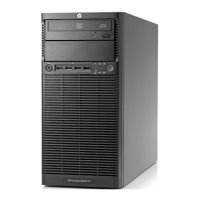
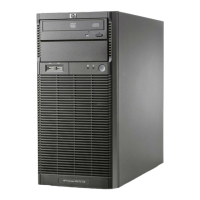
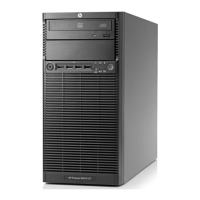
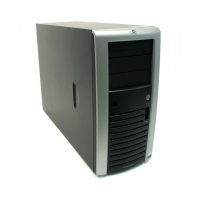

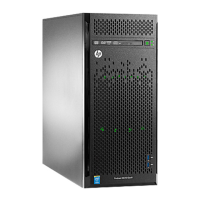
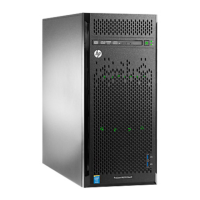
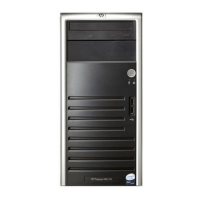
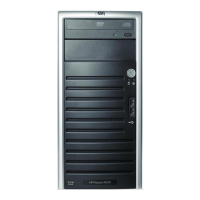

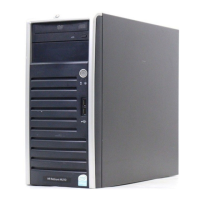
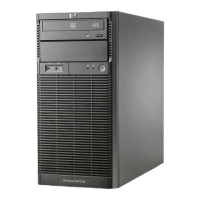
